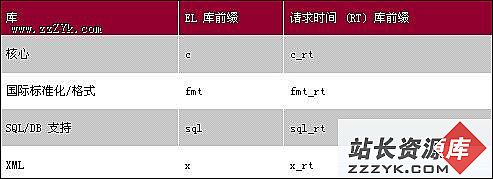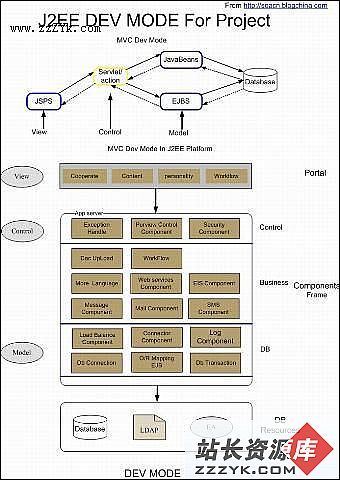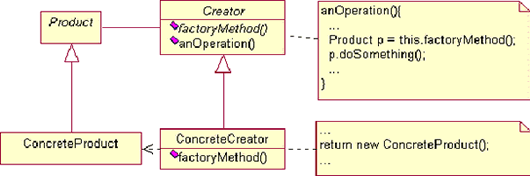当前位置:编程学习 > JSP >>
答案://文件:PropertyManager.java
//这个类其实没什么用了,可以去掉,但需要去掉前面几个类中对这个类的引用。
package com.qingtuo.db.pool;
import java.util.*;
import java.io.*;
/**
* Manages properties for the entire Jive system. Properties are merely
* pieces of information that need to be saved in between server restarts.
* <p>
* At the moment, properties are stored in a Java Properties file. In a version
* of Jive coming soon, the properties file format will move to XML. XML
* properties will allow hierarchical property structures which may mean the
* API of this class will have to change.
* <p>
* Jive properties are only meant to be set and retrevied by core Jive classes.
* Therefore, skin writers should probably ignore this class.
* <p>
* This class is implemented as a singleton since many classloaders seem to
* take issue with doing classpath resource loading from a static context.
*/
public class PropertyManager {
private static PropertyManager manager = null;
private static Object managerLock = new Object();
private static String propsName = "/pcc_2000.properties";
/**
* Returns a Jive property
*
* @param name the name of the property to return.
* @returns the property value specified by name.
*/
public static String getProperty(String name) {
if (manager == null) {
synchronized(managerLock) {
if (manager == null) {
String sysname=System.getProperty("os.name").toUpperCase();
if(sysname.indexOf("WIN")!=-1){
propsName=propsName2000;
}
else{
propsName=propsNameLinux;
}
manager = new PropertyManager(propsName);
}
}
}
return manager.getProp(name);
}
/**
* Sets a Jive property.
*
* @param name the name of the property being set.
* @param value the value of the property being set.
*/
public static void setProperty(String name, String value) {
if (manager == null) {
synchronized(managerLock) {
if (manager == null) {
manager = new PropertyManager(propsName);
}
}
}
manager.setProp(name, value);
}
/**
* Returns true if the properties are readable. This method is mainly
* valuable at setup time to ensure that the properties file is setup
* correctly.
*/
public static boolean propertyFileIsReadable() {
if (manager == null) {
synchronized(managerLock) {
if (manager == null) {
manager = new PropertyManager(propsName);
}
}
}
return manager.propFileIsReadable();
}
/**
* Returns true if the properties are writable. This method is mainly
* valuable at setup time to ensure that the properties file is setup
* correctly.
*/
public static boolean propertyFileIsWritable() {
if (manager == null) {
synchronized(managerLock) {
if (manager == null) {
manager = new PropertyManager(propsName);
}
}
}
return manager.propFileIsWritable();
}
/**
* Returns true if the jive.properties file exists where the path property
* purports that it does.
*/
public static boolean propertyFileExists() {
if (manager == null) {
synchronized(managerLock) {
if (manager == null) {
manager = new PropertyManager(propsName);
上一个:一个连接池的例子(来自JIVE)(5)
下一个:一个连接池的例子(说明)
- 更多JSP疑问解答:
- jsp新手求指导,不要笑!
- 如何让一个form提取的值传递给多个jsp?
- DW中,新建的html页面能否有jsp或php代码?
- jsp 如何限制表单,实现只能填写特定的数据。
- jsp 和javabean结合的程序有问题
- 从数据库里取出的数据如何传递到另外的jsp页面中
- 你好,ext嵌入那个jsp页面,是不是还需要加上一些插件啊,不太懂,麻烦你了。
- JSP不能处理所有问题吗?还要来一大堆的TLD,TAG,XML。为JSP 非要 Servlet 不可吗?
- 光标离开时全角转半角在jsp中怎么实现
- jsp 页面 打开 pdf 文件 控制大小 和 工具栏 能发份源码么 谢啦
- jsp页面点保存按钮,运行缓慢,弹出对话框提示
- jsp刷新页面如何不闪屏
- jsp 与html 的交互问题?
- jsp小数显示问题 例如 我在oracle 数据库中查询出来的是 0.01 但是在jsp页面上就显示成 .01 没有前面的0
- jsp中日历控件





